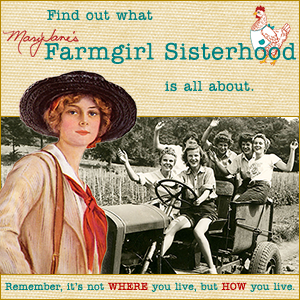“Dear Food, you probably already know this, but I need you.”

So begins a touching new video, “Love Letter to Food,” created by YouTube channel MinuteEarth. The channel’s planet-minded production team joined forces with families, farmers, and friendly faces to drive home the reality of food waste in the U.S.
“Roughly 40 percent of the United States’ food supply is never eaten,” explains the University of Minnesota study, which preceded the video. “At 1500 food calories lost per person per day, that is twice as much as most other industrialized nations and 50 percent more than was lost in the 1970s.”

Photo by Dwight Sipler via Wikimedia Commons
Even though I’ve talked about food waste before, I still find these numbers shocking. Nationwide, obesity has skyrocked since the ’70s, and we’re wasting more food than ever.
As you’ll see in the video below, waste is happening in more places than the kitchen. In fact, every step of a food item’s journey from field to fork is fraught with the peril of perishing at the hands of humans in one way or another. Whether it’s a crop left standing to rot due to high harvesting costs, proverbial spilled beans, milk gone sour, bruised banana skins, or misleading label dates, the woe of waste often seems to have a common denominator: we take food for granted.

Photo by Paul Asman and Jill Lenoble via Wikimedia Commons
Even as the rapidly rising global demand for food threatens the very survival of our species, food is cheaper and more readily available in our country than our ancestors could have dreamed possible. It comes in rainbow colors, eye-catching cartons, super sizes, and all-you-can-eat.

Photo by National Cancer Institute via Wikimedia Commons
“Part of the problem is that on average, I spend a smaller fraction of my household budget on [food] than in any other country or any other time in history,” states one of the video’s stars, CGP Grey. “My spending is spread out over days or weeks, so I don’t notice the cost of wasting [food]. But my lack of noticing adds up.”
In addition to wasting the food itself, the University of Minnesota study’s authors Alexander H. Reich and Jonathan A. Foley tell us, “Tremendous resources are used to produce uneaten food in the U.S.: 30 percent of fertilizer, 31 percent of cropland, 25 percent of total freshwater consumption, and two percent of total energy consumption.”

Photo by Tony Atkin via Wikimedia Commons
I know you share my punch-in-the-gut reaction to these statistics, but this is one of those issues I feel like I can tackle, starting today. I don’t need a how-to manual, a support group, more money, or special doo-dads.
I just need to appreciate food.

Photo by Roger Braunstein via Wikimedia Commons
Here’s the video that got me to thinking and speaking out …






























































































My beekeeper husband suggests using some old brood comb in the new hive box. Even so many times the bees decide to move on. Before they swarm they fill themselves up so they’re not hungry. One of his older colonies threw four swarms already this spring, very unusual. He was only able to capture two of them.
I love the new beehive, better luck next time.
That is so weird! It seems odd that the hive and sugar water was not enough to entice them to set up home. I must say that was an impressive swarm in your garden too. I guess it just goes to show us that there is more to be learned about how and where honey bees choose to set up their new hives. “You can lead a bee to a hive, but you can’t make it go in”? Sort of like the horse and water issue? If you learn of reasons why this happened, be sure to let us know because I am curious myself as to what happened.
It is my understanding that the bees have already scouted out their new home before they swarm. So, unless you catch them and “force” them into a new hive they already know where they are going to go when they leave. Luckily this year our swarming bees first gathered in a nearby shrub and we saw them quick enough that we were able to cut the branch and put them in a cardboard box until a new hive could be ordered and set up for them. Been in their new home for 2 weeks and all looks good!
News Flash Mary Jane!!! My FIRST baby Mason Bee hatched this morning. So tiny and cute he/she was. Now, per instructions, all of the cocoons have been taken out of the hatching netted sac and placed in the back of the house behind the reed housing tubes so that they all can fly out of the tiny hole in the back of the BeeHouse and start their work. I have been watching them everyday and nothing seemed to change. It took 24 days from when I placed the cooled cocoons outside in their hatching sac in the back of their little BeeHouse.
WooHoo Winnie! Congratulations are in order.
It’s unusual they are on the ground like that. If you could have found the queen and gently, so as not to hurt her, put her in your hive box, the rest will follow. It’s amazing to watch. I’ve done it twice when they are on the ground. She was probably under that clump. There is a bee brush you can use to gently move the bees aside to see if she is under there. Good luck next time.